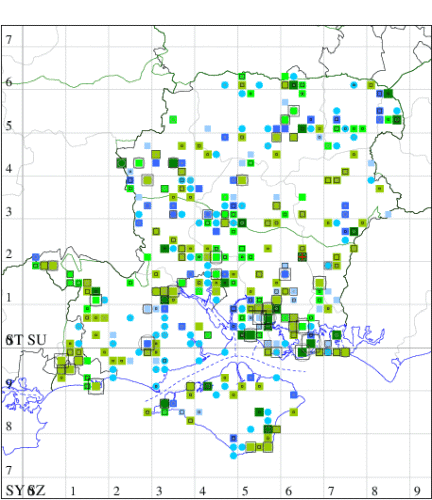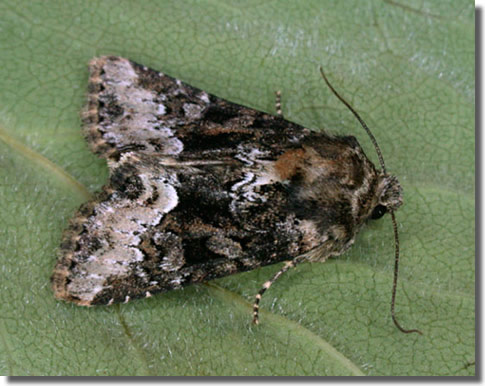Marbled Minor
Oligia strigilis
Checklist Number73.173 [B&F: 2337]
Verification
Record requires retention of specimen until confirmed, and may require dissection. Consult with CMR if unsure
Common in grassland, woodland rides, gardens and a wide range of other habitats throughout much of the British Isles. In Hampshire and on the Isle of Wight widespread and common in all three vice-counties. Wingspan 24-27 mm. Marbled Minor O. strigilis, Rufous Minor O. versicolor and Tawny Marbled Minor O. latruncula, especially their melanic forms, can only reliably be separated by dissection of the genitalia, although it may possible with experience to assign well-marked individuals to Marbled Minor at a particular site once the observer is familiar with the forms present in that area. In its typical form, Marbled Minor is the most easily recognised of the three: a short, black projection from the postmedian line into the white area outside it, near the dorsum, appears to be diagnostic. Larva feeds within stems of various grasses, including Cock's-foot, Common Couch and Reed Canary-grass.


The abundance in each month is indicated as follows:
 No records
No records Very occasional
Very occasional Irregular
Irregular Uncommon
Uncommon Off-peak, but not unusual
Off-peak, but not unusual Off-peak, but not unusual
Off-peak, but not unusual Main flight time
Main flight time| J | F | M | A | M | J | J | A | S | O | N | D | |
|---|---|---|---|---|---|---|---|---|---|---|---|---|
| Adult |  |  |  |  |  |  |  |  |  |  |  |  |
| Larval |  |  |  |  |  |  |  |  |  |  |  |  |



